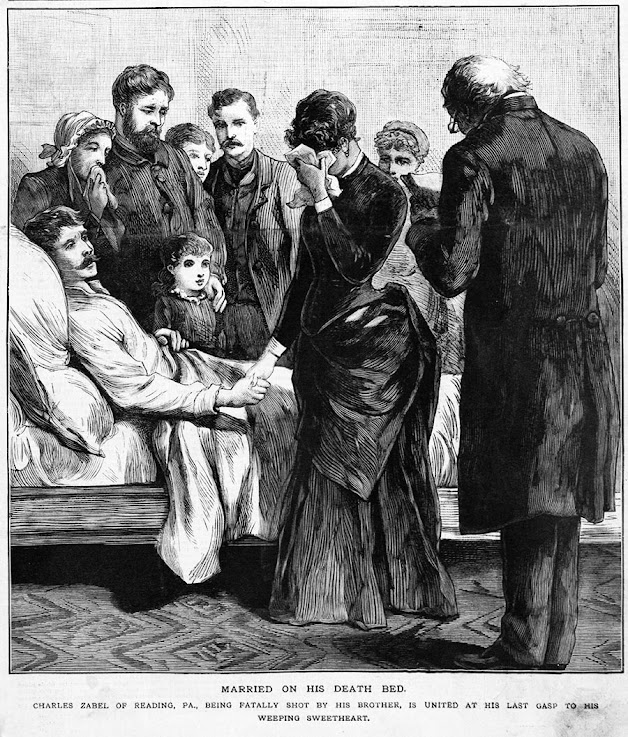In November 1891, The Northwestern Division of the Salvation
Army held a muster in Omaha, Nebraska, to honor "La Marechale"
Catherine Booth-Clibborn, leader of the Salvation Army in France. When the
afternoon session ended on November 14, Captain Hattie Smith from Oskaloosa,
Iowa, walked down the sidewalk conversing with Captain Wallace of Marshalltown,
Iowa. Nettie Biedler, a private in the Army, rushed up to them and, without
speaking, drew a revolver from the folds of her dress and fired at Captain
Smith. Smith let out a shriek and fled down the sidewalk with Wallace. Biedler
followed and fired again. The first shot had wounded Smith and she fell to the
ground after running less than a block. Biedler then put the revolver to her
own head and fired. She died instantly.
Captain Smith had been stationed at Council Bluffs, Iowa
before being transferred to Oskaloosa about a month before. Nettie Biedler was
also from Council Bluffs and the press first believed jealousy was the motive for
the shooting. Hattie Smith was engaged to Lieutenant Berry, of Boone, Iowa, and
it was believed that Nettie Biedler was trying to steal him from her.
On her deathbed, Captain Smith explained that the motive was
jealousy of another kind. Severely wounded, Smith was carried from the sidewalk
to a drug store, then to her temporary boarding place. A physician examined her
but pronounced the wound to be fatal. While still able to speak, Smith
explained that she had known Nettie Biedler in Council Bluffs and induced her
to join the Salvation Army. When they met again in Omaha, Biedler greeted her
with a great show of affection and on several occasions sought to occupy the
attention of Captain Smith to the exclusion of all others.
"It was a case of jealousy,” said Smith, “She was
jealous because I didn’t talk to her more."
Lieutenant Mary Bannister said she carried a message from
Biedler to Smith saying Biedler wanted to talk. Smith replied that she was too
busy. After lunch, the two did meet for an extended talk but what was said is unknown.
Lieutenant Bannister heard Smith say several times that she must go, and
Biedler tried to stop her. Biedler said if Smith went out and left her there,
she would be sorry for it.
A reporter went to Nettie Biedler’s home in Council Bluffs
and spoke with her younger sister. She said that Nettie and Hattie had been
fast friends and she knew of no trouble between the girls which might account for
Nettie’s actions. She also had no idea that her sister owned a revolver.
Captain Hattie Smith died later that day. The motive for the
murder was never fully explained. The Chicago Tribune summed it up as “…a queer
combination of jealousy and semi-religious frenzy.”
Sources:
“The Motive Was Jealousy,” National Police Gazette, December 5, 1891.
“Salvation Army Tragedy,” Sioux City Journal, November 16, 1891.
“Shot by a Salvationist,” Saint Paul Globe, November 16, 1891.
“Was it Jealousy?,” Champaign Daily Gazette, November 16, 1891.












.jpg)










